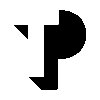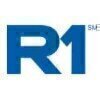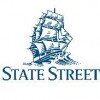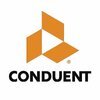Filter interviews by
Greet Technologies Interview Questions, Process, and Tips
Greet Technologies Interview Experiences
30 interviews found
(2 Questions)
- Q1. Tell me about yourself
- Q2. Tell me something about your memorable day
Top Greet Technologies Accounts Process Executive Interview Questions and Answers
Accounts Process Executive Interview Questions asked at other Companies
I applied via Job Portal and was interviewed in Jan 2024. There were 2 interview rounds.
Worst company i have ever worked
(2 Questions)
- Q1. Tell me about yourself
- Q2. Why do you want to work
Interview Preparation Tips
I applied via Recruitment Consulltant and was interviewed in Oct 2023. There were 3 interview rounds.

(2 Questions)
- Q1. What do you know about GST
- Ans.
GST stands for Goods and Services Tax, a value-added tax levied on most goods and services sold for domestic consumption.
GST is a single tax on the supply of goods and services, right from the manufacturer to the consumer.
It has replaced multiple indirect taxes like excise duty, service tax, VAT, etc.
GST has 4 tax slabs - 5%, 12%, 18%, and 28%.
Input tax credit can be claimed on taxes paid on input goods and services.
GS...
- Q2. What do you know about TDS and TCS
- Ans.
TDS stands for Tax Deducted at Source and TCS stands for Tax Collected at Source. They are types of indirect taxes in India.
TDS is deducted by the payer at the time of making payment to the payee.
TCS is collected by the seller from the buyer at the time of sale of specified goods.
TDS rates vary based on the nature of payment, while TCS rates are fixed.
TDS is applicable on income like salary, interest, commission, etc.,...
(2 Questions)
- Q1. Self introduction
- Q2. Qualities and strength
Interview Preparation Tips
Top Greet Technologies Accounts Process Executive Interview Questions and Answers
Accounts Process Executive Interview Questions asked at other Companies
I applied via Walk-in and was interviewed in Apr 2023. There was 1 interview round.
(8 Questions)
- Q1. What is accounting
- Ans.
Accounting is the process of recording, classifying, and summarizing financial transactions to provide information that is useful in making business decisions.
It involves keeping track of financial transactions such as sales, purchases, and payments
It includes preparing financial statements such as balance sheets and income statements
It helps in analyzing financial performance and making informed business decisions
Exam...
- Q2. What is Drm and Cr.
- Ans.
DR and CR are abbreviations used in accounting to represent Debit and Credit respectively.
DR stands for Debit and is used to record an increase in assets or a decrease in liabilities or equity.
CR stands for Credit and is used to record a decrease in assets or an increase in liabilities or equity.
Every transaction in accounting must have an equal amount of DR and CR entries.
DR and CR are used to maintain the balance she
- Q3. What is bad debt
- Ans.
Bad debt is an amount owed by a debtor that is unlikely to be paid back to the creditor.
Bad debt is a loss for the creditor as they are unable to recover the amount owed.
It can occur due to various reasons such as bankruptcy, insolvency, or fraud.
Bad debt can be written off as an expense for tax purposes.
For example, if a customer owes $1000 to a company and declares bankruptcy, the company may not be able to recover t
- Q4. How balance sheet is calculated
- Ans.
Balance sheet is calculated by subtracting liabilities from assets.
Assets are listed on the left side of the balance sheet and liabilities on the right side.
The difference between the two sides is the owner's equity or net worth.
The balance sheet is a snapshot of a company's financial position at a specific point in time.
Examples of assets include cash, accounts receivable, and property.
Examples of liabilities include
- Q5. What is bad debt?
- Ans.
Bad debt is an amount owed by a debtor that is unlikely to be paid back.
Bad debt is a loss for the creditor as they are unlikely to receive the amount owed.
It can occur due to bankruptcy, insolvency, or default by the debtor.
Bad debt can be written off as an expense for tax purposes.
Examples include unpaid credit card bills, unpaid loans, and unpaid invoices.
- Q6. Explain About tally
- Ans.
Tally is an accounting software used for managing financial transactions and generating reports.
Tally is widely used by businesses for bookkeeping and accounting purposes.
It can handle various financial transactions such as invoicing, inventory management, payroll, and taxation.
Tally provides various features such as data security, remote access, and multi-lingual support.
It can generate various reports such as balance...
- Q7. How bad debt refers in balance sheet
- Ans.
Bad debt refers to the amount of money owed to a company that is unlikely to be paid back.
Bad debt is recorded as an expense on the income statement.
It is also reflected on the balance sheet as a reduction in accounts receivable.
The amount of bad debt is estimated by the company based on past experience and current economic conditions.
For example, if a company has $100,000 in accounts receivable and estimates that $5,0...
- Q8. Who is debtors and creditors where we add those in B/S
- Ans.
Debtors are people who owe money to the company, while creditors are people or entities that the company owes money to. They are added to the balance sheet.
Debtors are listed under current assets on the balance sheet
Creditors are listed under current liabilities on the balance sheet
Debtors can include customers who have not yet paid for goods or services
Creditors can include suppliers who have not yet been paid for goo...
Skills evaluated in this interview
Greet Technologies interview questions for popular designations
Essay on Time Management
Interview Preparation Tips
Revise the basics of Accounting & Taxtion
All topics
Account Executive 1 Interview Questions asked at other Companies
(1 Question)
- Q1. Tell me about your favorite film in hindi and what you learnt?
Accountant Interview Questions asked at other Companies
Jobs at Greet Technologies
I applied via Walk-in and was interviewed in Aug 2023. There was 1 interview round.
(1 Question)
- Q1. How was your college life
Interview Preparation Tips
Top Greet Technologies Accounts Process Executive Interview Questions and Answers
Accounts Process Executive Interview Questions asked at other Companies
I applied via Apna Jobs and was interviewed in May 2023. There were 2 interview rounds.

(2 Questions)
- Q1. Tell me about your Native Tell me about your college life Tell me about Bangalore city
- Q2. Introduce yourself What do you know about GST
Interview Preparation Tips
Key Accounts Executive Interview Questions asked at other Companies
I applied via Campus Placement and was interviewed in Feb 2023. There were 2 interview rounds.

(2 Questions)
- Q1. Basic Accounting questions and self introduction and checking the confidence in us.
- Q2. Asking the self introduction in your known languages like Hindi, English and Kannada.
Interview Preparation Tips
Processing Executive Interview Questions asked at other Companies
I applied via Indeed and was interviewed before Oct 2023. There were 2 interview rounds.
(2 Questions)
- Q1. Own Basic details
- Q2. Regards basic Accounts knowledge
Regards the little bit General Knowledge
Senior Accounts Executive Interview Questions asked at other Companies
Greet Technologies Interview FAQs
The duration of Greet Technologies interview process can vary, but typically it takes about less than 2 weeks to complete.
Tell us how to improve this page.
Greet Technologies Interviews By Designations
- Greet Technologies Accounts Process Executive Interview Questions
- Greet Technologies Executive Accountant Interview Questions
- Greet Technologies Key Accounts Executive Interview Questions
- Greet Technologies Financial Accountant Interview Questions
- Greet Technologies Accountant Interview Questions
- Greet Technologies Senior Accounts Process Executive Interview Questions
- Greet Technologies Software Engineer Interview Questions
- Greet Technologies Processing Executive Interview Questions
- Show more
Interview Questions for Popular Designations
- Accounts Process Executive Interview Questions
- Design Engineer Interview Questions
- Software Engineer Interview Questions
- Intern Interview Questions
- Senior Associate Interview Questions
- Business Analyst Interview Questions
- Graduate Engineer Trainee (Get) Interview Questions
- Test Engineer Interview Questions
- Show more
Greet Technologies Interview Process
based on 27 interviews
Interview experience
Interview Questions from Similar Companies
Greet Technologies Reviews and Ratings
based on 353 reviews
Rating in categories
|
Accounts Process Executive
314
salaries
| ₹1.1 L/yr - ₹4.3 L/yr |
|
Executive Accountant
307
salaries
| ₹1.5 L/yr - ₹4 L/yr |
|
Senior Accounts Executive
90
salaries
| ₹2.3 L/yr - ₹3.6 L/yr |
|
Senior Accounts Process Executive
51
salaries
| ₹1.8 L/yr - ₹3.6 L/yr |
|
Customer Support Executive
20
salaries
| ₹1.8 L/yr - ₹3 L/yr |

Teleperformance

iEnergizer

WNS

Conneqt Business Solutions
- Home >
- Interviews >
- Greet Technologies Interview Questions


















